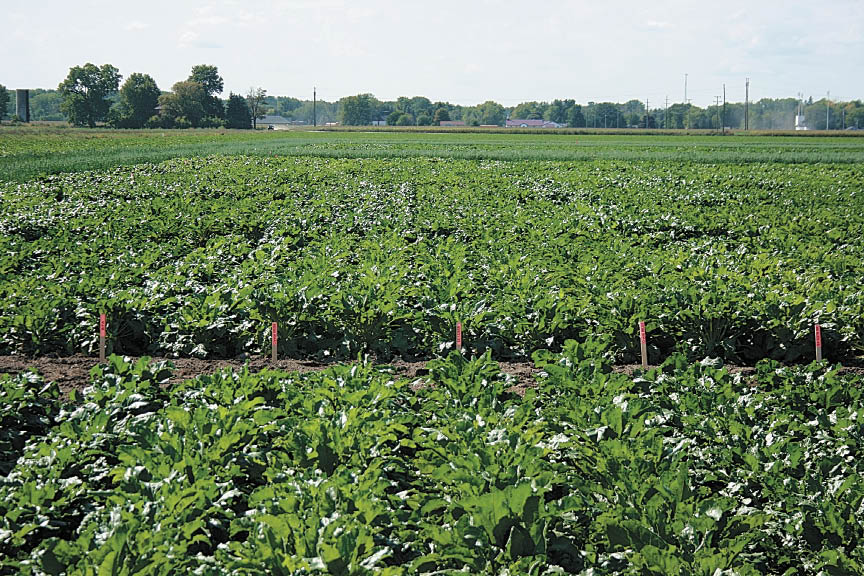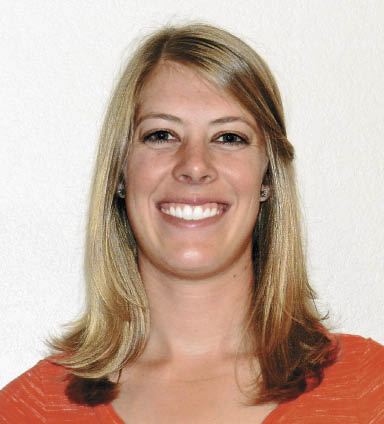 At Syngenta, we take pride in the research and development that has allowed Hilleshög brand sugarbeet seed to establish itself as the leader in disease tolerance. Although the Syngenta sugarbeet breeding program always had a presence in the U.S., recent changes in global strategy have allowed considerable expansion on U.S. soil. This expansion ensures greater focus on key markets so our varieties meet your needs and consistently perform in your fields.
At Syngenta, we take pride in the research and development that has allowed Hilleshög brand sugarbeet seed to establish itself as the leader in disease tolerance. Although the Syngenta sugarbeet breeding program always had a presence in the U.S., recent changes in global strategy have allowed considerable expansion on U.S. soil. This expansion ensures greater focus on key markets so our varieties meet your needs and consistently perform in your fields.
By expanding our research program with new equipment and additional breeders, we are reinforcing our commitment to the U.S. sugarbeet market. This year, Neil Glynn and Anna Pranger, Syngenta breeders, joined forces with Rebecca Larson, head of product evaluation, and the rest of the sugarbeet-focused Syngenta research and development team to conduct and evaluate trials, talk with growers and investigate critical needs across each of the sugar co-ops.
 Glynn, originally from England, started his career with Syngenta in the U.K. before completing a Ph.D. in molecular plant pathology in wheat. Post-graduation, he worked for the National Institute of Agricultural Botany, a varieties company, before moving on to the United States Department of Agriculture (USDA) sugarcane breeding program in Florida. "I am new to sugarbeets, but I am not new to sugar, or to plant breeding. It's great to return to Syngenta and to see how much progress the company has made," Glynn shared.
Glynn, originally from England, started his career with Syngenta in the U.K. before completing a Ph.D. in molecular plant pathology in wheat. Post-graduation, he worked for the National Institute of Agricultural Botany, a varieties company, before moving on to the United States Department of Agriculture (USDA) sugarcane breeding program in Florida. "I am new to sugarbeets, but I am not new to sugar, or to plant breeding. It's great to return to Syngenta and to see how much progress the company has made," Glynn shared.
"My background is in plant pathology and plant diseases. By default, I work on disease traits, which is a good fit for my new role because we work so extensively to develop disease resistance. I'm excited to bring my knowledge and experience from government and academia to the private sector. Our team works very closely with sugarbeet growers as well, so I am very keen to understand what the needs of the growers are and provide solutions for their challenges."
 Pranger comes to Syngenta from Colorado State University, where she received her M.S. in plant breeding and genetics. Her interest in agriculture developed while studying abroad in Honduras, where she worked with farmers and began to understand their challenges. Now, in Anna's role with Syngenta, she has the opportunity to help address those challenges and works to produce varieties that combat the most common issues facing sugarbeet growers. "Sugarbeets are a unique crop in terms of breeding. This is my dream job, and there are great people here."
Pranger comes to Syngenta from Colorado State University, where she received her M.S. in plant breeding and genetics. Her interest in agriculture developed while studying abroad in Honduras, where she worked with farmers and began to understand their challenges. Now, in Anna's role with Syngenta, she has the opportunity to help address those challenges and works to produce varieties that combat the most common issues facing sugarbeet growers. "Sugarbeets are a unique crop in terms of breeding. This is my dream job, and there are great people here."
Larson, head of product evaluation in the U.S., has been working with sugarbeets since 1999 when she began her Ph.D. program in plant pathology. Her sugarbeet focus continued as a post-doctorate in Fargo and as a scientist leading a program in Fort Collins, both with the USDA. In 2007, Larson started with Syngenta in product evaluation, which she describes as "the bridge between breeding and sales and marketing." Larson says, "It's my responsibility to go out to the market and find gaps. I then look at what the breeders are producing and find hybrids to produce what will fill those gaps." Larson is drawn to this work because, "Every year I get to see the impact of my decisions in the field. It is a nice change from basic research, and it's a fun challenge."
The work of a breeder is ever changing. "You can pick any week and our work could be completely different from the previous. It ranges from planting to working in the fields to analyzing data to finding lines we might want to advance to production," Glynn explained.
Pranger and Glynn share similar feelings about their roles as breeders. "One of the things that attracted me to this work is the diversity of the role. You follow these seeds through all the growth stages of the crop," Pranger explained.
Breeders identify and then cross traits to create the best seed varieties, "My responsibilities are to create breeding lines that produce varieties for the west. They have disease issues that are different than other sugarbeet-growing areas in the United States. I work primarily in developing tolerance of Curly top," shared Glynn as he described his role. Pranger explained that she specializes in sugarbeet challenges of the Red River Valley and focuses her efforts in developing tolerance to Rhizoctonia, Aphanomyces and Fusarium.
Larson described their team as "tight-knit" and explained that there is a lot of cooperation in their work. "A breeding program lays out a plan, then we have a large group known as Biological Assessment responsible for executing the plans of our breeders."
Breeding is a game of numbers. "The breeders test huge numbers of hybrids early in development. Very few of those come out winners, which make it to the market. In the past year, we have greatly expanded the breeding capacity in the U.S. The more volume our breeders begin with, the more winners will come out of the pipeline," Larson explained. "The `winners' do not just define success for the breeder, but also for the grower, since they will have a better product for their farm."
The development of a new hybrid is an investment of extensive time and research. "From the very first cross until it ends up in the grower's hands, it takes approximately 12 years. That is something unique to sugarbeets. It is a long process," Pranger explained.
Syngenta has a strong commitment to research and development, which is reflected in the expansion of the breeding program for the U.S. market. "The shift is due in part to the acknowledgement that the U.S. is a very important market for Syngenta globally. The growers in the U.S. face a myriad of disease pressures and challenges. Syngenta feels fortunate to be able to offer material with really good disease packages," explained Glynn.
In discussing the expansion of research and development, Pranger said, "Syngenta has the best disease package in the market. We don't just produce the seed. We also have the unique opportunity to partner with our crop protection group to enhance variety development and to deliver the best possible product to the grower. We can also leverage resources from our other crops. Within Syngenta, breeders across crops meet to discuss how they can improve their programs so we can learn from each other."
Larson discussed the investment and explained the intention to create additional productivity in the breeding program. "Syngenta has access to a second-to-none molecular breeding platform. We are able to utilize these technologies to speed up our breeding process. We also have access to many different traits, which means that we will be able to get those gene traits to market sooner than competitors. One other thing that sets us apart is that we conduct variety trials in all of the major sugarbeet markets of the United States."
The Hilleshög brand features varieties that protect developing beets from several damaging diseases; as Larson shared, "We have the best Rhizoctonia tolerance globally, a phenomenal Root Aphid program, and the most extensive disease testing of any of the sugarbeet seed companies in the U.S. We have internal nurseries for Rhizoctonia, Root Aphid, Erwinia, Curly Top virus, Aphanomyces and Fusarium, and abroad we have nurseries for powdery mildew, Cercospora and many other pests and pathogens." All the more reason Syngenta seed should be your first choice for sugarbeet protection.
Learn more about Hilleshög varieties at www.syngenta-us.com/seeds/sugarbeets/.